Crossing the line
Or, just how long can a project take
In England, if you’re a transport nerd, it’s becoming clearer and clearer that London’s “Crossrail” project is almost ready to open. If you’re actually in London, signage is now visible on maps and in stations. On the internet, fairly frequently, you see people posting photos of their behind-the-scenes tours, or of ghost services, or of test exercises. There’s also plenty of speculation as to when it will actually open, because although the opening date is clearly close, it hasn’t actually been fixed yet.
Update, 4th May 2022: See below for an update on the above paragraph.
Because this blog isn’t really London-focused, I last mentioned Crossrail in an aside about fifteen years ago, when the government of the day agreed it could actually go ahead. I said at the time that the plan was about fifteen years old then, which makes it a thirty-year-old project now. However, I was recently reading a book I’d picked up on a second-hand stall and found this:
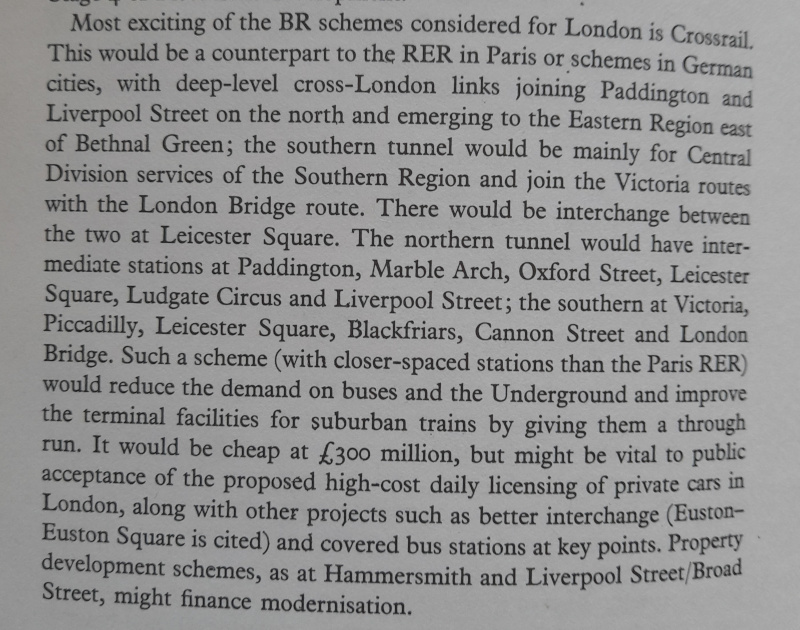
Hold on while I transliterate that…
Most exciting of the BR schemes considered for London is Crossrail. This would be a counterpart to the RER in Paris or schemes in German cities, with deep-level cross-London links joining Paddington and Liverpool Street on the north and emerging on the Eastern Region east of Bethnal Green; the southern tunnel would mainly be for Central Division services of the Southern Region and join the Victoria routes with the London Bridge route. There would be interchange between the two at Leicester Square. The northern tunnel would have intermediate stations at Paddington, Marble Arch, Oxford Street, Leicester Square, Ludgate Circus and Liverpool Street; the southern at Victoria, Piccadilly, Leicester Square, Blackfriars, Cannon Street and London Bridge. Such a scheme (with closer-spaced stations than the Paris RER) would reduce the demand on buses and the Underground and improve the terminal facilities for suburban trains by giving them a through run. It would be cheap at £300 million, but might be vital to public acceptance of the proposed high-cost daily licensing of private cars in London, along with other projects such as better interchange (Euston—Euston Square is cited) and covered bus stations at key points. Property development schemes, as at Hammersmith and Liverpool Street/Broad Street, might finance modernisation.
In other words, the Crossrail we’re getting now is only part of what was originally on the plans, but is still recognisably the “Crossrail North” described here even if some of the route and station locations are rather different nowadays. It’s also rather telling that the Broad St property development went ahead years before any part of Crossrail was even attempted—within the next few years it’ll turn forty. Even the congestion charge, mooted here, was brought in well before Crossrail was. So when, in that case, was this actually written?
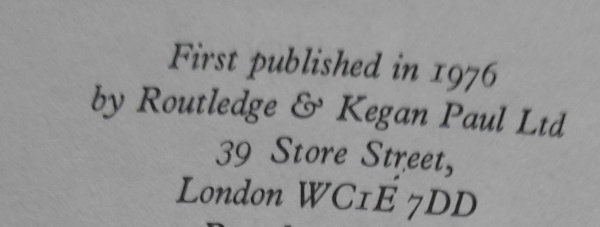
This is a description of Crossrail as it stood in 1976!
So when Crossrail does open in a few weeks or months time, and there are innumerable speeches on how this gives London a world-beating transport system, just remember that: it was first planned nearly fifty years ago, in emulation of other schemes. I assume the references to German projects include the Munich Stammstrecke, which is just turning fifty (they opened it for the Olympics) and the Frankfurt City-Tunnel* which opened in 1978. London isn’t leading the world in any way with Crossrail; it’s trailing it by a number of decades.
The book, incidentally, was London’s Lost Railways by Charles Klapper. It’s one of those railway books written in the 1970s by an elderly man who could still when he wrote remember the railways as they were before the Great War. It’s also one of those railway books that must have been printed in vast quantities, because you find it on sale in practically every place that sells second-hand railway books, for about 50p. I’ll likely be donating my copy back to charity once I’ve read it a second time.
Update, 4th May 2022: Crossrail’s opening date was finally announced this morning as May 24th 2022. Only some fourteen-and-a-half years since the Brown government committed to building it.
* That’s actually its name in German.

 Home
Home
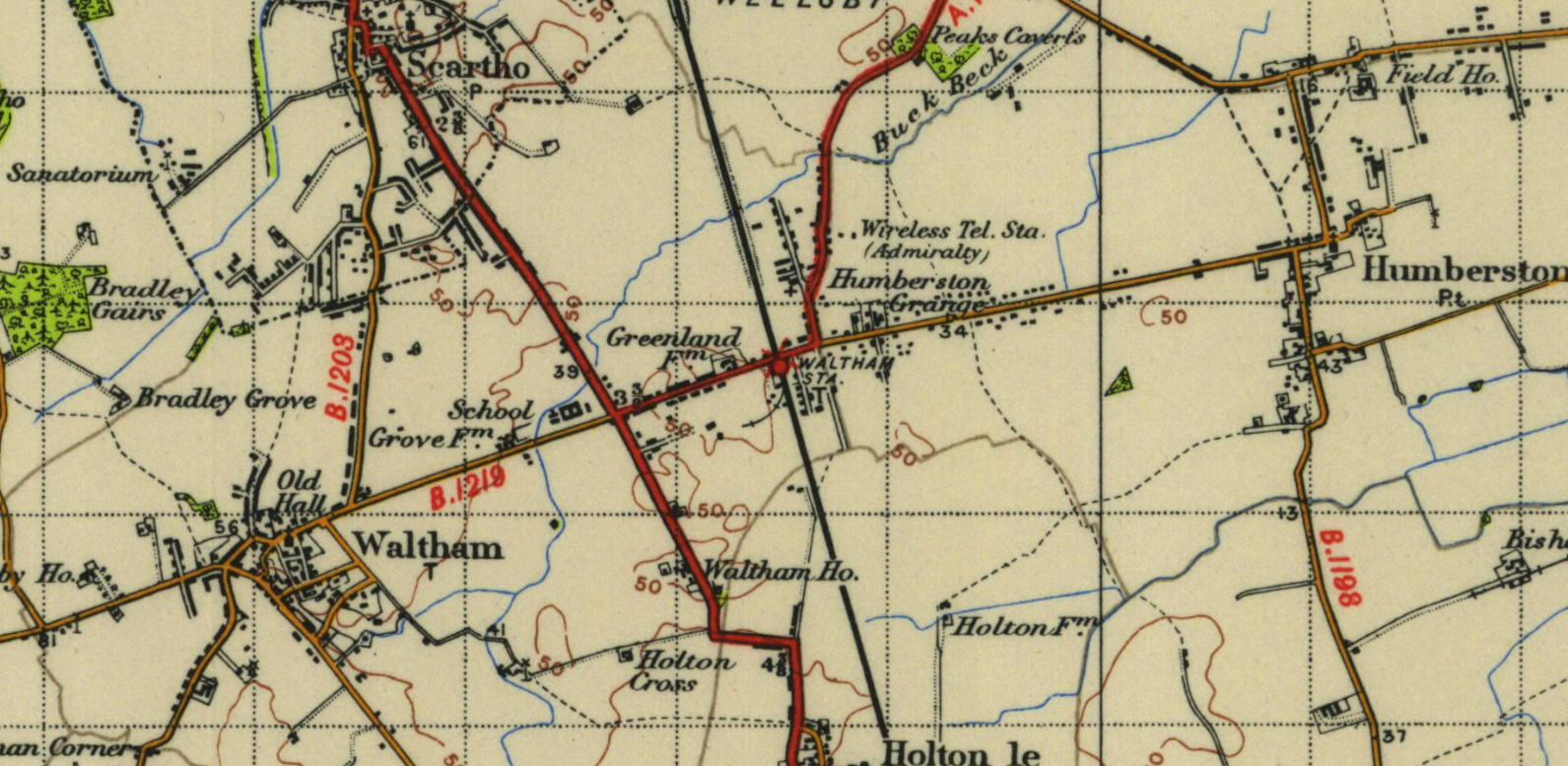
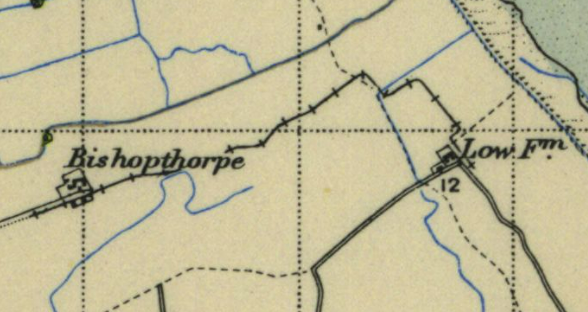
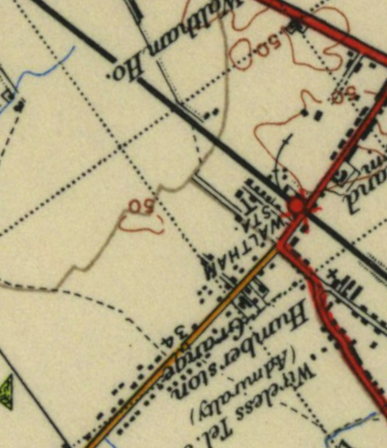
 Newer posts »
Newer posts »